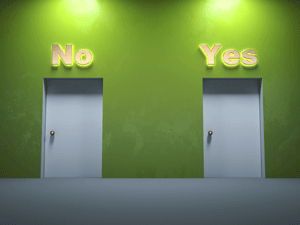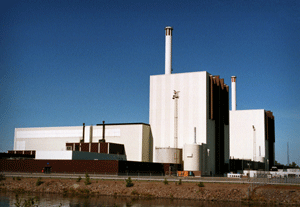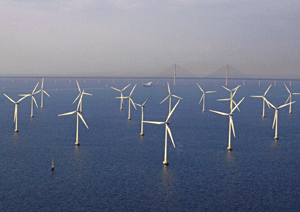Swedish vote will decide future of nuclear power
on
Swedish vote will decide future of nuclear power
On Sunday 19 September, Sweden will elect a new parliament (Riksdag). The outcome may have important consequences for Swedish energy policy. If the Left succeeds in gaining back the majority in Parliament from the Right, the Swedish “nuclear renaissance” will likely be nipped in the bud. As regards state-owned energy company Vattenfall, the right-wing parties are contemplating opening the door for private shareholders and selling off the company’s German and Dutch assets. The Left is opposed to privatisation, but might agree to the divestment of non-Swedish assets. When it comes to renewable energy, there is not much difference between left and right: both sides have lost faith in ethanol and have promised to boost biogas, wind power and electric cars.
 |
| Swedish 'nuclear renaissance': nipped in the bud? |
For Sweden’s energy policy, this means that the choices will be much more rigid than before. Broader compromises across ideological lines, which were occasionally achieved in the past, are now highly unlikely. Much to the regret of the energy industry, which prefers to see broad support behind energy policies, to ensure their continuity in the future. The elections promise to be tight. The two blocs are roughly equal in the polls, with the governing coalition having a slight advantage. And there is a wild card, too: the radical right-wing Swedish Democratic Party could gain entry into Parliament, if they score above the 4% threshold. They could even obtain a role as kingmakers, holding the balance of power.
Relatively satisfied
The energy industry is generally positive about the achievements of the current right-wing Alliance in the past four years. ‘The government has met our expectations during this legislative period,’ says Kjell Jonsson, chief executive of Swedenergy, the electricity industry’s lobby group.
He is fully supported by Maria Sunér Fleming, director of Energy and Climate Policies with the Confederation of Swedish Industry: ‘Overall, we’re satisfied.’ Gunnar Fredriksson, deputy chief executive of Swedish Wind Energy, the wind industry lobby group, qualifies this somewhat. ‘We are relatively satisfied with the goals, not completely satisfied with what has actually been achieved’.
Needless to say, the political opposition has a different view. ‘Four years of missed opportunities to undertake a drastic conversion to renewable energy sources. The seriousness of climate change has either not been recognised or it has been consciously ignored. There is a lack of vision.’ This is the view of Monika Wetterstrand, one of the co-leaders of the Green Party. Through her charisma and matter-of-fact attitude, Wetterstrand has been the opposition’s trump card. In many ways she has managed to overshadow the leader of the Social Democrats, Mona Sahlin. In the capital, Stockholm, the Greens have a chance to become the largest party in the Red-Red-Green bloc. This means that, should the Left coalition win the elections, the Greens might come to exert significant influence on Swedish energy policy.
Push for new reactors
Nuclear power continues to occupy a key position in Sweden’s energy policy. Last year the Alliance took the historic decision to end a 30-year old ban on new nuclear build that had been instituted after a referendum in 1980. That is, they will do so – if they win the election on Sunday.
This breakthrough came about after the Centre Party gave up its traditional opposition to nuclear power. Sweden has ten reactors which produce about half of the country’s electricity supply. The Alliance wants to make it possible for the existing reactors to be replaced by new ones. The right wing bloc envisions three main energy sources for Sweden in the future: hydropower, nuclear and renewables.
The opposition sees the stand of the Centre Party – in particular of its high-profile Industry Minister Maud Olofsson – as a capitulation. Until recently, the Centre Party had been bound by an anti-nuclear pact with the Social Democrats.
 |
| Forsmark is the most modern nuclear power station in Sweden |
Despite the problems encountered by Finland’s Olkiluoto 3 reactor, which is currently under construction, Kjell Jonsson doesn’t anticipate any financing problems, ‘as long as no special additional taxes are levied on nuclear power ’. He argues that ‘I find it very difficult to imagine that Sweden could achieve its energy policy ambitions while simultaneously switching off nuclear power which is the source of approximately half of its electricity supply’.
The industry is worried that the current political polarisation will rule out any compromises in future, especially with the Social Democrats. Both the other parties in the Red-Red-Green bloc are staunchly opposed to nuclear power. Sahlin’s Social Democrats are split. Its members and voters who earn their money in industry, including the labour unions, tend to be in favour of nuclear power, those who work in the civil service tend to be against. The party’s official position is to maintain the status quo and not allow any new reactors to be built, whereas the Greens are demanding the closure of at least one reactor.
Selling off Vattenfall
Another bone of contention between the two blocs is the future of state energy company Vattenfall. Maud Olofsson, who sees herself and the Centre Party as “the green voice of the Alliance”, has proposed to gradually sell off parts of Vattenfall, in particular its lignite coal-fired power stations and nuclear power plants in Germany and its Dutch “gas” subsidiary Nuon which it acquired only last year. Nuon is known as a “gas company” in Sweden, i.e. a producer of fossil-fuel based energy (in reality, the Dutch company also produces significant amounts of renewable energy). Olofsson said the money from such a sell-off could be used to set up a new state-owned energy company that would specialise in domestic production of renewable energy.
The Social Democrats’ initial reaction to this proposal was negative. Their economic spokesman, Thomas Õstros’ said it would be absurd to let go of ‘one of the state’s crown jewels’. Later, however, he said that ‘Vattenfall’s “bad” investments in European coal and gas power stations could be re-examined after a red-green election victory’. However, whereas the Alliance would consider a partial privatisation of Vattenfall, this is rejected by the Left coalition. The acquisition of Nuon in the Netherlands has been criticised heavily in Sweden because the price Vattenfall paid is regarded as too high.
Air force
Although nuclear power and Vattenfall are the energy issues the two blocs differ most strongly about, most of the attention in the energy debate currently goes to the question of renewable energy. Until now, Sweden has barely had to worry about this, given that its power supply could be relatively easily secured with large shares for hydro and nuclear power. However, Sweden has set itself the goal of sourcing 49% of its electricity needs from renewables by 2020 (including hydropower), compared with 2002.
This would require the production of an additional 25 TWh of “clean” electricity production, expected to be supplied for the most part by wind power. Currently Swedish wind power production is about 3 TWh. According to Gunnar Fredriksson of Swedish Wind Energy this is ‘an appropriate and achievable goal’. About 15 TWh would be produced on land and 10 TWh offshore. The Left coalition would like to see 30 TWh of wind power to be produced in 2020 instead of 25 TWh. This would also be achievable, says Fredriksson. It would require 6,000 wind turbines to be built. It takes some 400 MW of capacity to produce 1 TWh of wind power.
To finance the expansion in wind power, the Swedes do not want to follow the German model. They regard it as inefficient and inordinately expensive. Germany is ‘completely unsuitable’ as a wind power model for Sweden, says Jonsson of Swedenergy. In contrast, Sweden in 2003 adopted the renewable energy certificate as a subsidy instrument. This has ‘made it possible to achieve cost-effective electricity production from renewable sources,’ according to the Swedish Energy Agency (Svensk Energimyndigheten), a government institution.
 |
|
Vattenfalls Lillgrund offshore wind power park, |
All this sounds like smooth sailing, but in fact Sweden has a big wind power problem at the moment. There is a huge mountain of applications for the construction of wind turbines waiting to be processed by officials. In the end only a fraction of those will be granted. This is the unintended consequence of legislation passed a year ago by Environment Minister Andreas Carlgren, who wanted to simplify the licensing process. He removed a number of stages in the approvals process, but at the same time strengthened the power of the local councils. They now have an absolute right of veto – and they use it extensively. Local politicians either bend to the will of the voters and turn applications down, or in some cases even “demand a price” for their approval. There is talk of corruption and bribery.
Fredriksson says the situation is a ‘legal disaster’. Anders Dahl, head of Vattenfall Vindkraft, agrees. ‘Seen as a whole, the approval process has become worse with the new laws. It has become more difficult and takes more time’.
According to the European Wind Energy Association (EWEA), Sweden’s average time for the approval of wind turbines is 43 months, which is among the longest in the EU. Both blocs have promised to change the law to improve the licensing process. In the meantime another unpleasant surprise hit the sector when middle-level officers in the air force declared a halt to the construction of all wind turbines within a 40 km radius of all military airbases. They did this without consulting their superiors or the government, citing flight safety as the reason. If this decision remains in force, it would, according to Swedish Wind Energy, affect the construction of 1,500 wind turbines with a production of a total of 3,000 MW and an investment value of kr45 billion (£á4.74 billion).
Better controls
One of the great delusions in renewable energy in Sweden has been ethanol. This had been promoted by the government as the preferred transport fuel in recent years, but it proved much too costly and led to huge imports of ethanol from Brasil. This convinced the government to cancel all ethanol subsidies.
The current big thing is biogas. Sweden has its own significant reserves of biomass which it can use to produce biogas. Bioenergy production grew from 127 TWh in 2009 to 137 TWh in 2010. Eon, one of Sweden’s big three suppliers, has placed several full-page newspaper advertisements for gas-powered cars. Still, there are only 107 biogas service stations in the whole of the almost 2,000 km long country (as of May 2010). There are hardly any biogas stations in the north, but in Stockholm too there are many complaints about empty pumps. No one is able to say when a sufficiently widespread network will be in place to make the purchase of gas-powered cars attractive.
To make matters worse, researcher Cecilia Hammerlund of the Agrifood Economis Centre at southern Sweden’s Lund University, has just released a report in which she advises against subsidising biogas. It is ‘an expensive way of reducing greenhouse gas emissions’, she concludes. She suggests other measures which she considers to be more effective: ‘For example, retaining forests and having better controls on farming are cheaper and more effective than attempting to replace fossil fuels with biofuels.’
Fortunately, there is one alternative in the transport sector: the electric car. This is seen by one and all in Sweden as the wave of the future. Vattenfall and the city of Stockholm have just decided to buy a number of electric cars in a public tender. They have asked other parties to join them. Over a hundred companies and institutions have now done so. They plan to buy 14,000 electric cars in the period 2011-2014. Vattenfall has taken it upon itself to develop infrastructure for the cars. How realistic the electric car ambitions of Vattenfall are remains to be seen. Neither of the two political blocs opposes the plan.
In any case, whichever bloc wins the election on Sunday, they will not be voted in on the basis of their energy programs. In fact, energy has not featured very much in the campaigns and debates at all. Employment, education and health care have been more electrifying election topics. Much to the regret of someone like Kjell Jonsson of Swedenergy, who would have liked to see a thorough debate on climate and energy during the election campaign. But perhaps there is too much consensus on this among Swedish politicians, despite their divergence on nuclear power.


Discussion (0 comments)